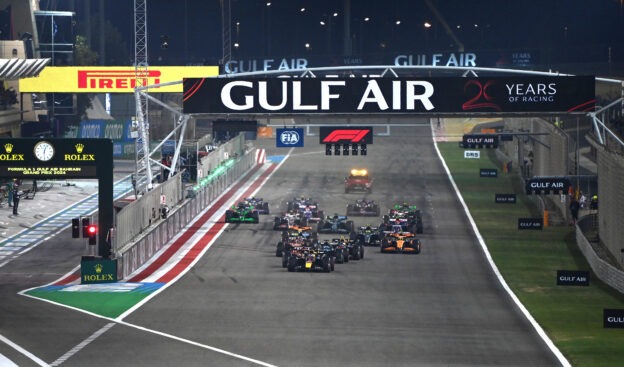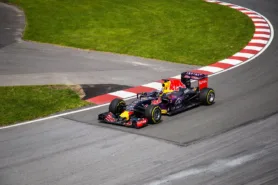2025 F1 Season: Bahrain GP Facts by Brembo

Formula 1 remains in Asia for the 4th round of the season, moving to the Middle East, which will also host the 5th GP of 2025. It is the turn of the Bahrain GP, which boasts 20 previous editions, along with the Sakhir GP that took place in 2020 on the same circuit but using the “oval” layout. The construction of the circuit began in 2002 and cost 56.2 million local dinars: the track was designed by Hermann Tilke, who evaluated four other sites before choosing to build it in Manama.
The GP data
According to the technicians from the Brembo group, who work closely with all the Formula 1 drivers, the Bahrain International Circuit, 5.412 km in length, falls into the category of circuits that are highly demanding on brakes. On a scale from 1 to 5, it earned a difficulty rating of 4 because in one lap, Formula 1 drivers use the brakes for 15.8 seconds, equivalent to 18% of the race. In five corners, they are subject to decelerations of at least 4.1 g and use the brakes for more than 2 seconds each. There are 4 braking zones classified as Hard, 3 as Medium, and one as Light.
The toughest corner
The hardest corner for the braking system at the Bahrain International Circuit is the first one, because the 1.1 km straight preceding it allows speeds to reach 313 km/h: Formula 1 drivers decelerate to 66 km/h in 2.89 seconds and experience a deceleration of 4.2 g thanks to a brake pedal force of 133 kg. Meanwhile, the cars cover 124 meters while the braking power is 2,112 kW.
Fernando Alonso's Ferrari debut
The 2010 Bahrain GP marked Fernando Alonso’s debut with Ferrari. However, the pole was secured by Sebastian Vettel. Next to him on the front row was Felipe Massa in the F10, while in the second row were Alonso and Lewis Hamilton. The Spaniard quickly passed his teammate to claim 2nd place and took advantage of a failure on Vettel’s car to take the lead on lap 34. Alonso triumphed with a 16-second advantage over Massa, in an unimaginable 1-2 that secured the Maranello team the leadership in both the Drivers’ and Constructors’ standings.
The brake setup of the time
At the end of 2009, refueling was banned, which led to an increase in the minimum weight of the cars, driver included, from 605 kg to 620 kg due to the larger fuel tank capacities. Teams had to redesign their cars, and Brembo likewise revamped their braking systems to ensure high standards for both ‘empty’ and ‘full’ vehicles. Alonso’s F10 was equipped with a carbon braking system that provided greater energy dissipation capacity compared to its predecessors, as well as offering a high level of efficiency under any load condition and therefore across a wide range of thermal levels.
The aid for the rear
Today's Formula 1 cars weigh 800 kg, driver included, yet they have managed to reduce lap times by over 3 seconds compared to three decades ago. This is also thanks to the brake-by-wire system that manages the rear braking, instantaneously varying the dissipative braking contribution based on regenerative input and ensuring the correct balance between the front and rear axles. This year, four F1 teams use Brembo’s by-wire units, while others prefer to use proprietary systems.
✅ Check out more posts with related topics:












